
The fight for fall reading break has continued for years, but to the average student there’s little sign of progress.
Last month, the AMS ran the biggest-ever survey of fall reading break, receiving over 6,000 student responses indicating broad support for a break.
But a lack of consultation for other groups, like faculty and staff, means that a fall reading break is tabled for yet another year.
In a statement to the Senate on February 11, AMS VP Academic and University Affairs Max Holmes — who is also a student senator — expressed disappointment in the lack of progress, claiming it had been implied that a break could be implemented following AMS consultation.
“The onus of consultation for an initiative, one which could benefit multiple stakeholders, should not fall solely on the shoulders of students and should not be resourced by an external society funded by student fees,” said Holmes.
The Student Senate Caucus is now urging the creation of a fall reading break working group, which was endorsed by AMS Council earlier this month. Holmes said it would help circumvent Senate’s sluggishness.
He also stressed the importance of implementing a break for student mental health, noting a significant majority of student comments from the survey dealt with depression and even suicide.
A long road to fall reading break
The Ubyssey’s archives outline a decade of debate and discussion around the fall break.
This paper’s records are not necessarily a perfect measure, but they offer stories on how students have shaped the school calendar in the past — and some useful clues on why we may be as far-off from fall reading break as ever.
-
1988
1988

In the late ’80s, students were still lobbying for a reading break in February. Course registration happened manually and an entire week of ‘class’ was given for students to walk between department buildings to set up their schedules. When the university finally automated the task, students hoped the extra five days would go towards a week-long break. Instead, the university expanded the December exam period — which, ironically, may now be shortened again to accommodate a fall reading break.
-
1989
1989
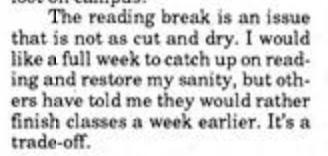
Much like today, the AMS was divided on the merits of a break, worrying it will tighten the December exam schedule.
-
1991
February 1991
The administration rejected early proposals for a break, arguing it wasn’t necessary. “The administration’s position has always been that students would spend this time skiing or or going to Hawaii but not studying,” said student senate candidate Hagan Ainsworth to The Ubyssey at the time. Another candidate, Rob Emmerson, complained that “a lot of UBC students feel they’re getting ripped off about, because other universities get a lot more time.”
-
1991
February 1991
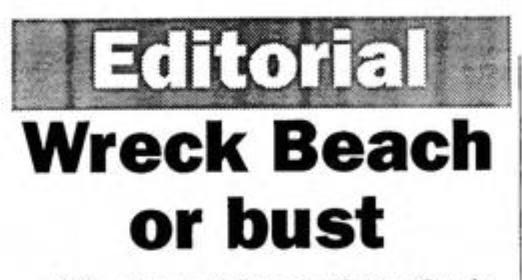
The administration rejected early proposals for a break, arguing it wasn’t necessary. “The administration’s position has always been that students would spend this time skiing or or going to Hawaii but not studying,” said student senate candidate Hagan Ainsworth to The Ubyssey at the time. Another candidate, Rob Emmerson, complained that “a lot of UBC students feel they’re getting ripped off about, because other universities get a lot more time.”
-
1995
1995
UBC students enjoyed their first-ever February reading break. It will be over a decade until similar motions for the fall equivalent gain significant traction in the press.
-
2011
2011
The first article about fall reading break published in The Ubyssey isn’t by The Ubyssey — it’s a wire piece from The Cord, Wilfred Laurier University’s student paper. The article notes fall break is gaining traction in Ontario schools: Ryerson University voted to implement one the following year, and the University of Ottawa had their first in 2010.
-
2015
March 2, 2015
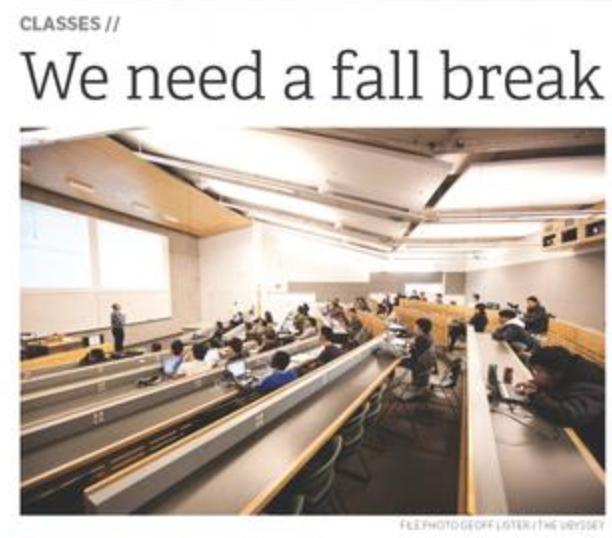
Nearly every other Canadian school has followed Ontario’s lead, and fall break is finally gaining traction at UBC.
-
2016
March 1, 2016
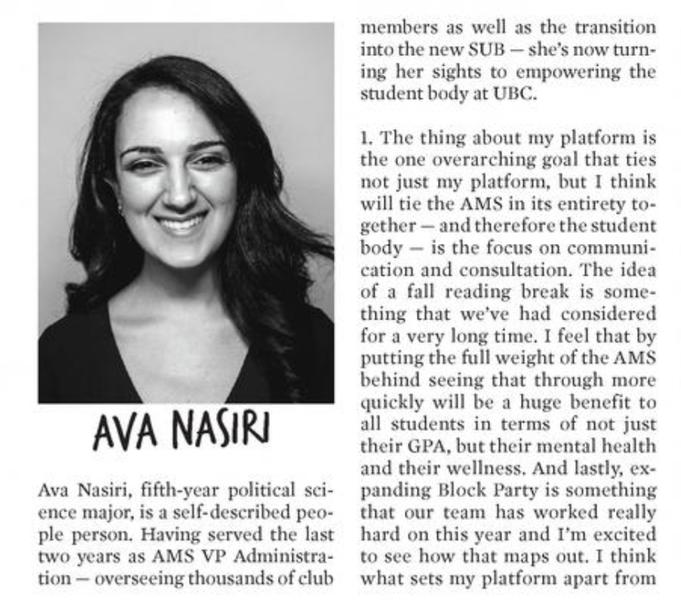
Ava Nasiri was the first AMS presidential candidate to propose “putting the full weight” of the society behind a fall reading break. She won, and the break went from a backburner issue to being a cause celebre.
-
2017
March 14, 2017
Well, maybe not. Two of the five elected senators-at-large prioritized a fall break in their campaigns, but one of them — Ian Sapollnik— stressed they haven’t done enough research to make their case. “[A] full review of these processes hasn’t happened in quite some time, and things have remained the same,” he said at the time.
-
2018
January 9, 2018
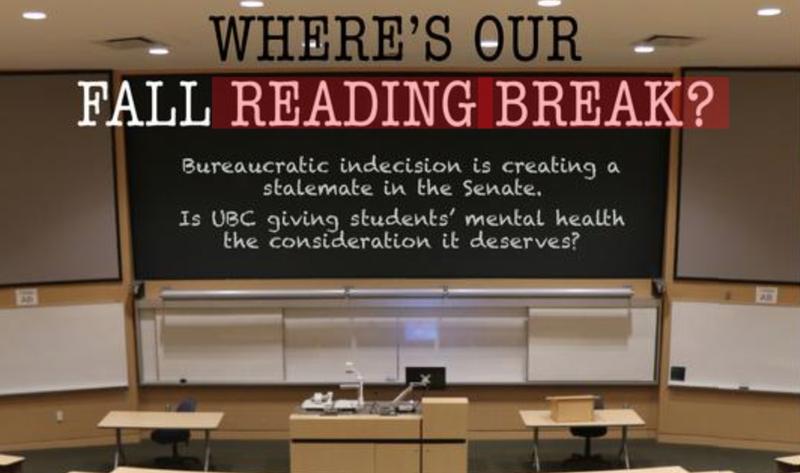
The front page of The Ubyssey is dedicated to fall reading break, but the Senate still doesn’t know what a fall break would even look like. “Whether it’s one day tacked onto something, or two days tacked onto something, or a whole week is very much up in the air,” admitted Kevin Doering, then-student senator and student Board of Governors member.
-
2018
October 23, 2018
VP Academic and University Affairs Max Holmes turned heads when he said a fall reading break is possible for the 2019/20 year, but the head of the Senate Academic Policy committee is quick to point out it’s unlikely to happen.
-
2019
January 9, 2019
The AMS prepared the largest-ever student consultation on fall reading break. The survey went on to gather almost 6,000 responses and demonstrate overwhelming student support for a “pilot” break of one to two years.
-
2019
February 4, 2019
The Engineering Undergraduate Society blasted the survey in an open statement, arguing the data isn’t trustworthy and suggesting Holmes neglected to consult them. Holmes’s office responds by suggesting the EUS was acting in bad faith. “The EUS statement would have you believe that we failed to acknowledge many of their key concerns, but this is not true.” reads the statement. “We have acknowledged many of these concerns, but often the answers may have been unsatisfactory to the EUS.”
-
2019
February 7, 2019 (approx 12:04 a.m.)
At the end of its nearly seven hour-long meeting, AMS Council voted to support the creation of a Senate working committee on fall reading break, but stopped short of endorsing a break itself following the EUS submission.

